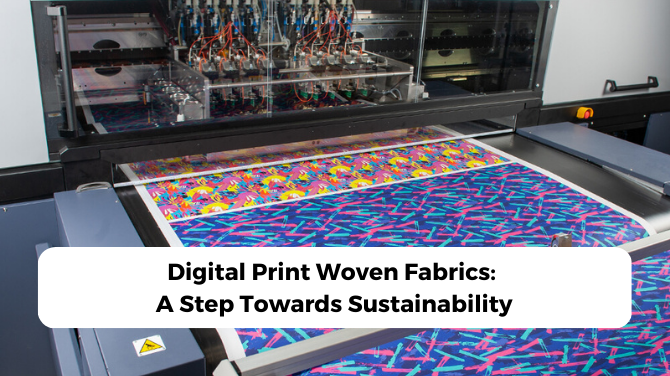Fabric manufacturing involves a high probability of defects. The entire production line contains hundreds of variables that could go wrong. It is important for merchandisers to have an overall understanding and expertise on various defects that can arise in the finished material. In this article, you will get familiarized with all the major defects that can arise in a fabric.
What are different Woven Fabric Defects?
- Askewed: A condition where filling yarns are not square with warp yarns.
- Water Spots: When a wet fabric is allowed to remain too long before drying, the color migrates leaving blotchy spots.
- Bad or defective selvage:

Bad selvage in woven fabrics due to faulty weaving. Here, the warp ends are set too far apart for the thickness of the yarn or in the finished fabric.
- Back fabric seam impression: While printing a fabric, backing fabric is used as a cushion. An impression will result on the printed fabric if there is a joining seam on the backing fabric
- Thin Place: This is caused when the filling yarn breaks and the loom continues to run until the operator notices the problem.
- Broken ends or warp:

A defect in the woven fabrics is caused by a warp yarn that was broken during weaving or finishing.
- Birdseye: It is caused by unintentional tucking from malfunctioning needles. It can be identified as two small distorted stitches side by side.
- Stop mark: When a running loom is stopped, the yarn elongates under tension. Then when the loom starts again, the slack is woven into the fabric causing a defect.
- Broken picks or weft:

A filling yarn that is broken in the weaving of fabric.
- Bowing: is caused by finishing. Woven filling yarns lien in an arc across the fabric width. This is critical on stripes or patterns and not as critical on solid color fabrics.
- Soiled Filling or End: Dirty, oily-looking spots on the warp or filling yarns, or on packaged-dyed yarn.
- Loose Warp:

This type of fault is produced in woven fabrics when the tension of warp yarn is slow.
- Broken color Pattern: This happens when colored yarns are out of place on the frame.
- Smash: is caused by a number of ruptured warp ends that have been repaired.
- Loose Weft or Snarl:

It is produced in woven fabrics due to the looseness of filling yarn.
- Color Out: is the result of color running low in the reservoir on the printing machine.
- Slub: is caused by an extra piece of yarn that is woven into the fabric. It can also be caused by the thick places in yarn. This is unintentional as slub can also be an effect on the fabric.
- Color Smear: This happens when color is smeared during printing.
At Dinesh Exports we follow a 4-Point fabric inspection system with acceptance level (Maximum Point Count) being 24 points / 100 linear meters. For any type of woven fabric requirements, contact us.
- Scrimp: is the result of fabric being folded or creased when passing through tenter frames.
- Double Ends:

This kind of fault is produced in woven fabrics when two ends of warp sticks get together after sizing.
- Crease Mark: differs from crease streak in that streak will probably appear for an entire roll. The crease mark appears where creases are caused by fabric folds in the finishing process. On napped fabric, final pressing may not be able to restore fabric or original condition. Often discoloration is a problem.
- Sanforize Pucker: results from uneven wetting out on sanforize. Fabric will appear wavy or puckering when spread on the cutting table. Difficult to detect while inspecting on inspection machine with fabric under roller tension.
- Tight Ends:

If the tension of warp yarn is more than the other ends present in the loom then this type of fault is produced in woven fabrics.
- Drop stitches: are formed because of a malfunctioning needle or jack. It will appear as holes or missing stitches.
- Runner: will appear as a vertical line caused by a broken needle. This rarely happens in a modern machine as most machines have a stopping device to stop the machine when a needle breaks.
- Float of Warp:

If someone pulls the fabric together with the cloth roller intentionally or unintentionally then this kind of defect is produced in woven fabrics.
- Dye Streak in Printing: results from a damaged doctor blade or a blade not cleaned properly. Usually, a long streak until the operator notices the problem.
- Puckered Selvage: Usually caused by selvage being stretched in finishing or by uneven wetting out in the sanforization process.
- Wrong end color:

It is produced in the woven fabric due to the wrong drawing of colored yarn.
- Hole: is the result of a broken needle.
- Print Out of Repair: It is caused by print rollers not being synchronized properly. This results in various colors of designs not being printed in the proper position.
- Jerk-in: When an extra piece of filling yarn is jerked partway into the fabric shuttle, this defect occurs. It can be seen at the selvage.
- Miss Pick:

This kind of defect is produced in the woven fabric when the operator starts a stopped machine without picking the broken weft from the shade.
- Printing Machine Stop: Dye or ink smudged along the width of fabric as a result of the printing machine stops.
- Knots: are formed as a result of trying spools of yarn together.
- Double Pick:

It is produced when the cutter doesn’t work properly.
- Pin Holes: are formed along the selvage caused by pins holding fabric while it processes through the tenter frame.
- Missing Yarn: This is a result of the wrong fiber yarn placed on the warp. The fabric could appear as a thick end or a different color if fibers have a different affinity for dye.
- Ball:

If the warp is too hairy then the reed will create a ball in warp yarn in between the reed and heald shaft. If the ball is small enough to pass through the dent of the reed then those will form the ball in fabric.
- Open Reed: This defect occurs when a bent reed wire causes warp ends to be held apart, exposing the filling yarn. This will be conspicuous on fabrics that use different colored yarns on warp and shuttle.
- Mixed End: Yarn of a different fiber blend used on the warp frame, resulting in a streak in the fabric.
- Needle line: is caused by bent needle forming distorted stitches. Usually a vertical line.
- Mottled: color applied unevenly during the printing process.
This is not a complete list of fabric defects there is. If you know any that we missed, please comment below.
















